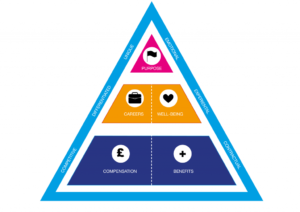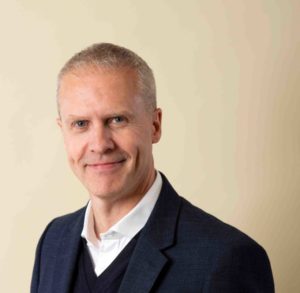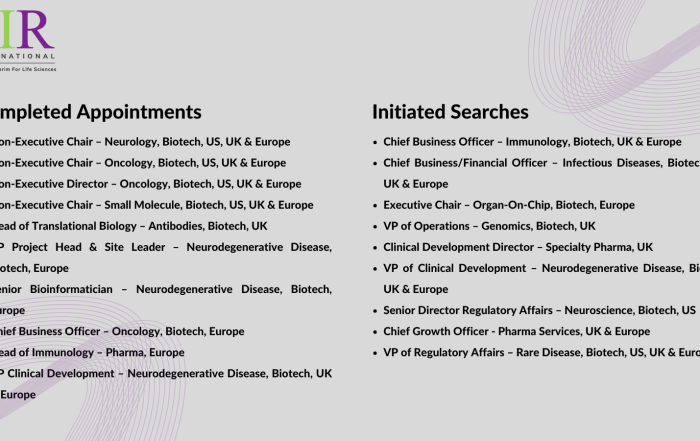
When companies complain that they can’t find enough good people, the cause, in my view, is most likely to be deep-rooted and centered on a misalignment between the strategic goals of the business and the efforts of the company’s talent acquisition professionals. In this article, I outline the approach I took as a talent acquisition leader at Pfizer and offer some ideas that you can implement right away. But before I do, here are four breakthrough ideas to bridge the gap.
Earn a Seat at the Table
The root causes for the misalignment between people and business goals are deceptively simple. They usually center on two things. First, the people who find and hire talent don’t sit in the same meetings as those who set the direction of the overall business and its main operating units. Getting a seat at these senior-level forums, and the credibility to contribute on an equal footing as a genuine ‘business partner’ remain difficult. This is usually because the lingering perception of HR (where talent acquisition resides) is of a lower-level, tactical support function. At least, in many organizations.
I have worked with a diverse mix of business leaders. Depending on which one you speak to, he or she will view talent acquisition as either strategic or operational – or somewhere in between. But only if the talent acquisition role is seen as strategically important will HR stand a chance of showing how it helps leaders meet the manpower elements of their strategic plans, and ultimately their business goals. To earn the right to wear that badge, the people in talent acquisition must have an understanding of strategy and an ability to talk fluently about it. They need to know not just what questions to ask, but also when to ask them.
Build a Well-Trained Team
My objective as a talent acquisition leader at Pfizer was to build a corpus of people that had just this knowledge. One approach was through training. Now, many would argue that strategy planning is only learned through experience, and I wouldn’t disagree. But I found that equipping people with a clear overview of the discipline, familiarizing them with the vocabulary and showing them the crucial questions to ask, all made for a significant step in the right direction. By taking it, I was able to build and maintain strong relationships with senior leaders to ensure I was, at a minimum, present in those all-important workforce planning meetings.

Stay in the Cycle
Usually at the invitation of the relevant HR business partner for the region or business unit, I would meet the colleagues involved to discuss short, medium and long term strategies. If the particular team was in high growth mode, the meetings might be weekly, but more often monthly. It is the combination of current operating needs plus the long term business plan that has to drive the company’s overall talent acquisition programme.
Plan to Flex as Forces Change
Here is where the second cause of misalignment between strategy and talent acquisition lies. Long term business plans must be flexible – they need to change in tandem with the circumstances that gave rise to them. If there is a fundamental shift in direction or focus, everything else must be reviewed and where necessary, adapted or even redesigned to reflect that evolution. Too often, the talent acquisition plan gets overlooked, or cannot flex quickly enough, and as a result the business begins to fall behind competitors in the ‘war for talent’.
Designing the talent acquisition strategy is a critical first step in allowing leaders in the HR function to get that crucial alignment. Below are the seven key steps I followed and which can be used as a template for your own efforts.
Steps to Designing a Talent Acquisition Strategy
- Look at the critical skills required to ensure business objectives are continuously met, and regularly review them. As the life sciences industry and specific therapeutic areas evolve, so do the skills required. You don’t want to invest in hiring ‘key’ people only to see their expertise become redundant within a matter of months.
- Perform a skills gap analysis to pinpoint where you are exposed. The evolution of a business portfolio brings with it the need to integrate new skills, techniques or areas of expertise. Identifying gaps early is vital and allows HR professionals to thoroughly map the market and determine where the necessary talent currently sits, the size of the potential candidate pool and where obstacles might arise (location, for example).
- Develop an internal mobility and succession plan to ensure that you are bringing the best out of your talent. Having a succession plan in place is a crucial component of any company’s talent management process. It acts as a great motivator for key people within the organization and is an important retention tool.
- Plan for attrition. Again, this is a very important element in workforce analytics for presentation to business leaders. Forecasting future leavers helps leaders to plan accordingly for any skills gaps and back-fill appropriately, and in good time.
- Analyze company demographics to ensure diversity objectives are met. Diversity is no longer optional. It has become an essential driver of creativity and innovation. From gender to ethnicity, it is important to get the balance right. One of the biggest problems in almost all industries is that women in senior leadership roles remain a minority. At Pfizer, although we always chose the best person for the job, we made a concerted effort to ensure diverse candidate short lists were always provided to hiring teams.
- Determine gaps and therefore external recruitment needs. Once the internal skills have been identified and succession planning has been implemented, any clear gaps can be determined; what’s going to be critical in the near future and what’s needed for the longer term.
- Define and develop an external sourcing strategy. In my experience, the strategies and tactics deployed to recruit active jobseekers are quite different to those used for ‘passive candidates’. The latter are relatively happy in their current position, but might be open to the right move, if this is proposed and presented well. In the past, when companies were operating in a comparatively ‘steady state’, a big corporate brand was often enough to produce a good candidate roster. In my former role, I became accustomed to hearing: “Why wouldn’t they want to work for us? We’re Pfizer!” In today’s highly competitive and fast-evolving environment it’s advisable not to over-rely upon the pull of a big corporate brand. Only a compelling, personalized and value-led employment proposition will attract the best.
As mentioned, being part of the high level business discussions where the talent plan is developed is a key first step in turning a talent acquisition strategy into an overarching recruitment and sourcing plan. The next important step is to design, deliver and execute in partnership with each of the individual hiring teams.
Recruitment is not a ‘one size fits all’ process, so it’s extremely important that the talent acquisition team really understands the business. This solid grounding allows them to be creative in developing and implementing a variety of sourcing plans, defined by the variable parameters that matter most. Here are some examples.
Parameters for a Sourcing Plan
- Business-critical needs. In the Life Sciences Industry, these are often determined by the current product portfolio. There may be a need to bring therapeutic area or technology experts into the organization to complement the existing workforce.
- Candidate demand. In highly competitive therapeutic areas such as immuno-oncology, demand usually outweighs supply. Securing highly sought-after individuals will take a creative sourcing and attraction strategy and a winning ‘value proposition’.
- Passive versus active candidates. Most companies, in my view, still mistakenly see both groups as one and the same. Understanding the different hiring methods for each group is crucial.
- Utilization of relevant media channels. The use of media depends on who you are trying to attract. For cost and efficiency reasons, most individual advertising campaigns now appear in digital media. The rapid development in the use of social media for recruitment purposes is no secret. LinkedIn and even Facebook can be important tools to source and identify talent. But as I have seen, passive candidates need a different strategy. This might involve a combined approach by the in-house sourcing team in partnership with a specialist executive search consultancy. The benefit I found in using third-party specialists was their depth and breadth of industry knowledge, their strong, more closely-knit networks with key opinion leaders and their ability to deliver consistently on complex assignments.
- Creating a winning value proposition. The scarcity of able leaders is well recognized. However, there is also a severe – and growing – shortage of people able to run divisions and manage critical functions. Interesting but challenging projects, merit-based career progression and flexible working are just some of the key criteria expected by candidates today. At Pfizer, work-life balance was the most important factor we found when we surveyed senior leaders.

Image: The Employer Value Proposition
The Life Sciences Industry has made progress. However it still has a lot more to do to find cost savings, create efficiencies and drive innovation. For those reasons, it’s more important than ever that talent acquisition professionals step up to the mark and work as true, value-adding partners with leadership colleagues.
The alternative is to accept that human resources is purely transactional, non value-adding and therefore something that should sit outside the core of the enterprise, or even fully outsourced to a third party. That’s not a vision I relish. I prefer the alternative vision; one in which HR professionals help their co-workers, clients and employers design a hiring strategy for What’s Next, and break free from the comfortable, familiar and in many cases outdated methods used in the past.
About the Author

Phone: +44(0)7817 315783
Email: tom@pir-intl.com




